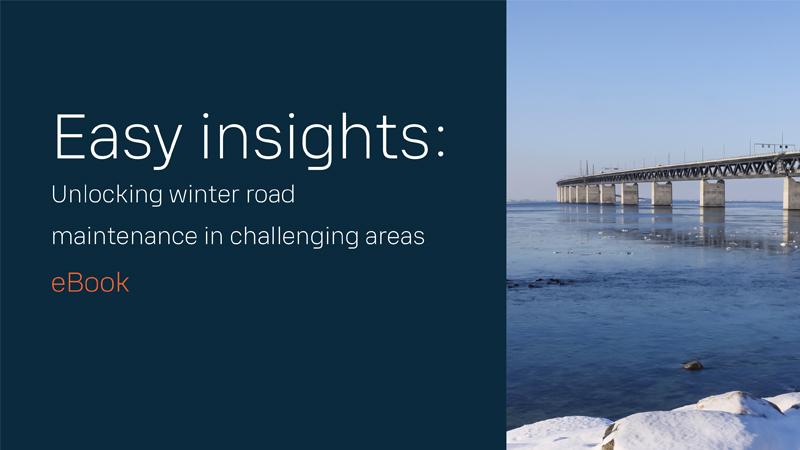Going hybrid: The game-changing approach to winter road maintenance
Winter road maintenance has always been a challenge, but organizations today have the added pressures of more extreme weather events, shifting budget constraints and complex road networks. Let's explore how the new hybrid approach combines the best of all available sensors and road weather systems with road weather forecasts and real-time road condition data to improve road safety and efficiency.
Download our free eBook, Easy insights: Unlocking winter road maintenance in challenging areas, to learn more about how you can implement this groundbreaking approach.
The challenges of winter road maintenance
One of the biggest challenges for winter road maintenance agencies is monitoring road weather conditions everywhere, from city streets to bridges and cycleways, and over a vast road network. Road weather conditions can vary significantly from one location to another and can change rapidly — making it difficult to deploy resources where they are needed most.
Another challenge is predicting and responding to rapidly changing weather conditions. This makes it difficult to plan. The new hybrid approach enables you to take the additional steps to prevent or mitigate hazardous conditions.
How the hybrid approach transforms road maintenance
The hybrid approach is revolutionizing the way road maintenance agencies address the challenges of icy roads, blind spots and varying conditions to ensure safer winter travel. The innovation comes with modern IoT sensors that can be installed virtually anywhere since they are battery-powered. This makes it possible to easily fill data gaps between road weather stations, for a complete road weather observation system that enables the most efficient approach to winter road maintenance.
Not only does this approach combine different types of fixed and mobile sensors in different locations, but it also fuses the measurements with road weather forecasting and road weather models. The automated data collection and visualization delivers insights to real-time and near-future road conditions over the whole network.
Road weather forecasting and modeling
Vaisala's road weather forecasting and modeling processes are an important component of the hybrid approach to winter road maintenance. They provide road maintenance agencies with the information they need to make informed decisions about when and where to deploy resources.
Vaisala’s road weather model processes data from several sources — combining atmospheric data with physical road conditions, weather forecasts and dozens of other factors — to create an estimate of what road surface conditions will be like in the near future. It is a physical model of the main processes affecting the road surface with two main components: an energy balance model which predicts surface temperature based on multiple factors, and a material balance model which predicts the amount of water, snow and ice on the road.
Today we enhance even further these road weather forecasts by regularly fusing real-time road weather data from the network of fixed and mobile sensors, including IoT sensors. A recent study* showed that Vaisala GroundCast improved road surface temperature forecasts by up to 70%.
Benefits of the hybrid approach
Real-time road condition data and enhanced road weather forecasts make it easy for road maintenance agencies to proactively identify and address hazardous conditions even before they start. Cost efficiency is another benefit: If sensors detect that a road is not icy, road maintenance agencies may choose to delay or cancel their plowing operations, which can save them money.
This approach can also reduce the environmental impact of winter road maintenance. By using real-time data to target their efforts, winter road maintenance agencies can reduce the amount of salt and other chemicals they use, which can help protect the environment. For example, if sensors detect that a road is only slightly icy, road authorities may choose to use a less aggressive de-icing treatment, which can help reduce the amount of salt that enters waterways.
Easy insights: the future of winter road maintenance
The hybrid approach gives greater visibility and control over your entire road network, eliminating blind spots and saving costs through the efficient use of multiple tools.
The future of winter road maintenance will be shaped by changes in climate patterns. As the climate continues to warm, we can expect to see more extreme weather events, such as blizzards, ice storms and flooding. These events will pose new challenges for road maintenance agencies, but the hybrid approach will help to them with confidence.
Ready to learn more about the hybrid approach to winter road maintenance? Download a free copy of our eBook, Easy insights: Unlocking winter road maintenance in challenging areas.
* R. Tardif, R. Honkanen, J. McCaa, The impact of embedded IoT sensor observations on road weather forecasts, PIARC 2023.

